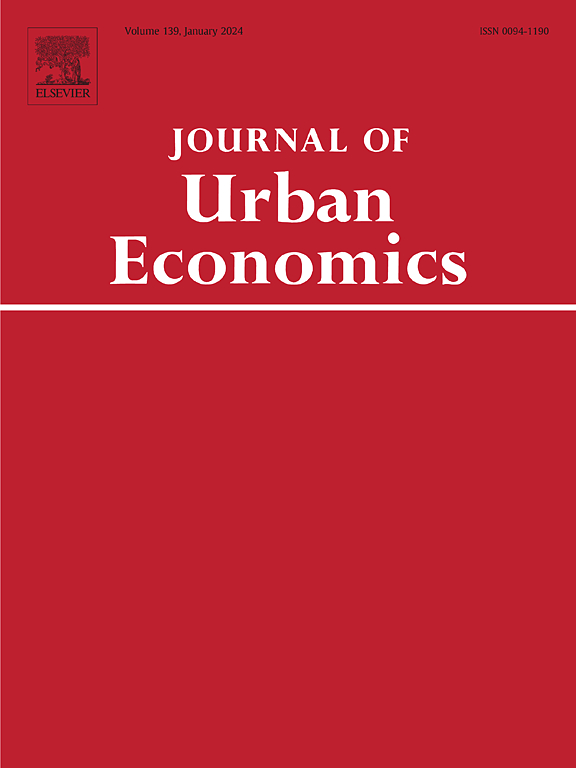The spatial impacts of a massive rail disinvestment program: The Beeching Axe
IF 4.8
1区 经济学
Q1 ECONOMICS
引用次数: 0
Abstract
This paper investigates the reversibility of the effects of transport infrastructure investments, based on a programme that removed much of the rail network in Britain during the mid-20th century. We find that a 10% loss in rail access between 1950 and 1980 caused a persistent 3% decline in local population relative to unaffected areas, implying that the 1 in 5 places most exposed to the cuts saw 24 percentage points less population growth than the 1 in 5 places that were least exposed. The cuts reduced local jobs and shares of skilled workers and young people.
大规模铁路撤资计划的空间影响:比青斧头
本文以 20 世纪中期英国拆除大部分铁路网的计划为基础,研究了交通基础设施投资效应的可逆性。我们发现,与未受影响的地区相比,1950 年至 1980 年间铁路通达率下降 10%会导致当地人口持续下降 3%,这意味着受削减影响最大的五分之一地区的人口增长比受影响最小的五分之一地区低 24 个百分点。削减减少了当地的就业机会,也减少了技术工人和年轻人的比例。
本文章由计算机程序翻译,如有差异,请以英文原文为准。
求助全文
约1分钟内获得全文
求助全文
来源期刊

Journal of Urban Economics
Multiple-
CiteScore
10.60
自引率
4.80%
发文量
64
期刊介绍:
The Journal of Urban Economics provides a focal point for the publication of research papers in the rapidly expanding field of urban economics. It publishes papers of great scholarly merit on a wide range of topics and employing a wide range of approaches to urban economics. The Journal welcomes papers that are theoretical or empirical, positive or normative. Although the Journal is not intended to be multidisciplinary, papers by noneconomists are welcome if they are of interest to economists. Brief Notes are also published if they lie within the purview of the Journal and if they contain new information, comment on published work, or new theoretical suggestions.
 求助内容:
求助内容: 应助结果提醒方式:
应助结果提醒方式:


